 A comprehensive SWOT analysis of owned and competitor content can supercharge B2B content strategy for the year ahead.
A comprehensive SWOT analysis of owned and competitor content can supercharge B2B content strategy for the year ahead.
Read on to see how this tried and true tactic can breathe new life into your content creation in 2019.
SWOT Analysis 101
SWOT refers to a strategic look at the project or business to identify “Strengths, Weaknesses, Opportunities, and Threats.”
As an acronym, SWOT has been around since the 1960s. As a concept, I’m sure it’s older still.
But content marketers may want to revisit their trusty SWOT analyses for content creation.
That’s because the process systematically bridges the gap between what you HAVE created in the past and what you SHOULD create in the future.
And another bonus, because a SWOT analysis is familiar in business, using it to describe your data and conclusions can also help you better communicate decisions with other stakeholders.
Why Do I Need Another Analytical Acronym?
When people talk about measuring content effectiveness, ROI tends to dominate the discussion.
You definitely need to demonstrate ROI and understand the tangible business value that your content delivers.
But ROI alone is not enough. It is limited in three key ways.
ROI focuses only on:
- Past performance
- What has gone well
- Your content
ROI answers the questions: Did this content help to attract, acquire, and retain customers? And at what price?
SWOT analysis has a broader scope, paints a bigger picture, and answers more questions.
Including, “What next?”
You can picture ROI as a small subset of the overall SWOT analysis framework.
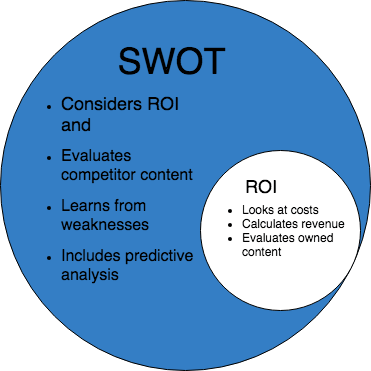
Content Marketing SWOT Analysis
To find content marketing strengths and weaknesses, you need to evaluate both search traffic and social engagements.
Traffic stats are easiest to find in Google Analytics.
Drill down under the Behavior and Site Content tabs and use the landing page report.
Then, set the filter to content from your blog, the number of page views, and the channel report from the Acquisition/All Traffic tab, for the amount of organic traffic.
Keep in mind, when considering competitors (and sometimes your own content), you won’t have access to these reports.
So in those cases, I suggest using the number of backlinks a post has or Moz’s page authority as a proxy for traffic.
Backlinks are part of the formula that search engines use to drive traffic. And page authority (PA) gives a 0-100 scale depicting how well a page is likely to rank in SERPs.
For example, using the Moz bar, I can compare content performance for SpinSucks.com.
The page below has a PA of 31/100. This is good for a new post that hasn’t had much time to gather backlinks and authority.
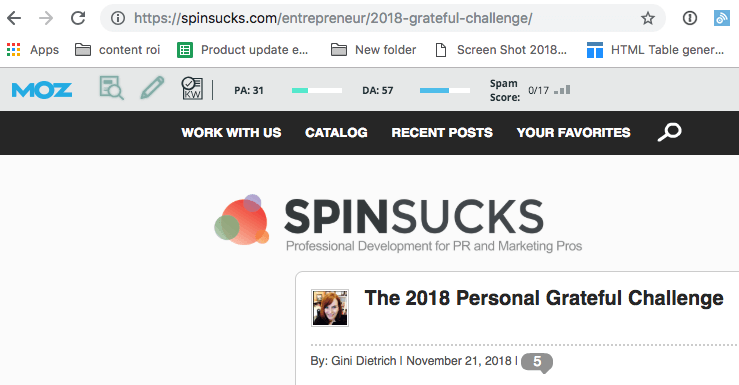
Now when it comes to social shares, some blogs will show you the social media share counts for their content with each post.
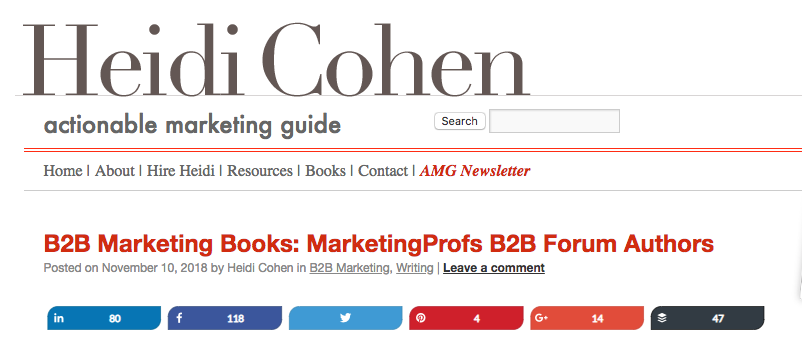
To minimize time-consuming manual searches, you can be very choosy about the posts you analyze.
And there are third-party tools which offer quicker options and provide share counts that aren’t published with the blog itself.
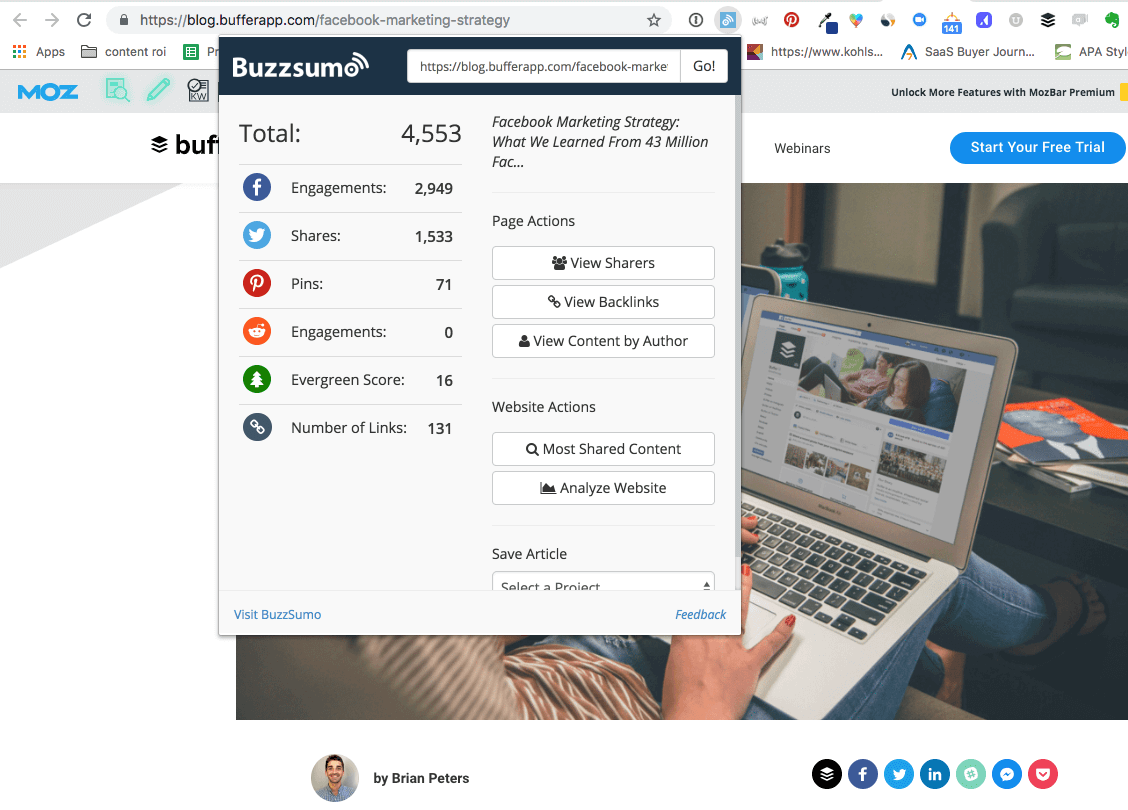
Determining Strengths
For strengths, look at your high performing content and ask careful questions to determine what made it so attractive to your audience.
In doing this, the goal is to develop a portrait of strong content so you can create more of what your audience prefers.
Here are a few things to consider:
- Content length
- Content format
- Date of publication
- Whether or not you collaborated with others
- Use and placement of images
For example, here’s a basic strength analysis of this highly shared post from Buffer, along with follow-up questions where needed:
- Content length: 2400 words (Is this length typical for the site?)
- Title/Theme: Facebook!
- Format: Research
- Date of publication: Aug. 2018, Updated Oct. 2018 (Is this an especially good time of year?)
- Collaboration: Yes, data provided by BuzzSumo
- Use and placement of images: YES! Screenshots, charts, gifs, embedded video. This post is visually rich.
Determining Weakness
To find the weaknesses, perform a similar analysis of your worst performing content, as well as any exceptional content from competitors.
(If the content in question makes you cringe, either because you wrote it, or because someone else thought of it first, consider this a weakness to evaluate).
Make a list of lengths, formats, dates, collaboration, and images for your best and worst content, and your competitor’s best content.
Once this is done, you’re ready to identify opportunities and threats by comparing the two.
Here’s an example of a format for arranging the information. (Grab the spreadsheet for your own use)
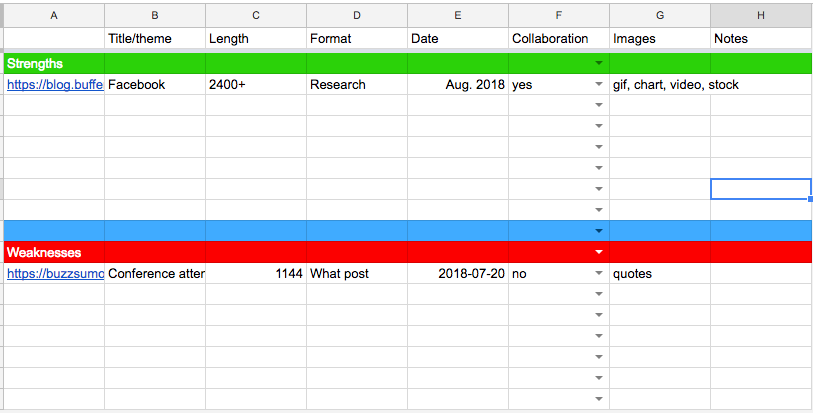
Identifying Opportunities and Threats
To find opportunities and threats, you’ll need to draw inferences from the strength and weakness analysis you’ve already done.
For example, if the Buffer post analysis from above was created by a competitor, I would label it as a threat—my audience may read it instead of my content. But if it’s my own content, I will list it as an opportunity for the year ahead.
And if I notice that my best performing content all has a research base, and I see that my competitors best posts are all about Twitter, I will add Twitter research to my list of opportunities.
Don’t Be Afraid to Predict
The missing link between your data and great content is you!
Data makes us think that reliable, low-risk predictions are possible. And they may be, but only in the most sophisticated environments.
Big data solutions which predict well can be expensive.
But, there is good news for content marketers who want cost-effective solutions:
The brain is essentially a “prediction machine” that is constantly busy comparing new input from the environment with predictions generated by internal models of the brain.
–Yee Lee Shing, Chair of Developmental Psychology, Goethe University
The human brain works predictively, and we are actually pretty good at making predictions.
Once you have considered the strengths and weaknesses of your content and your competitor’s content, don’t be afraid to fill in the blanks.
Here’s a simple equation to remember:
If my audience is interested in X and Y, then they may also be interested in Z.
For example:
X = I am writing about fraud prevention. And I notice, in addition to videos, that posts with headlines beginning with “What” perform better than all other content.
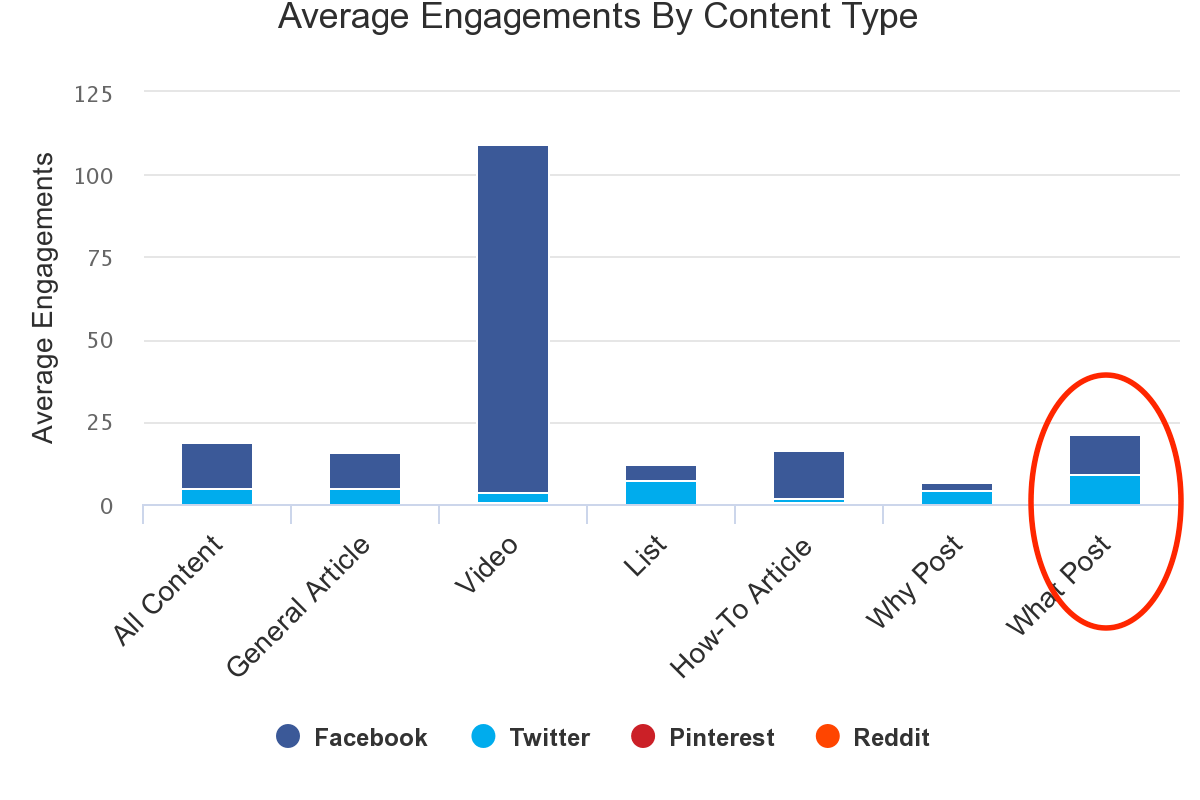
Y = Then, I notice that content published on Medium.com is highly shared for this topic. And there are no “What” posts about fraud prevention on their site.
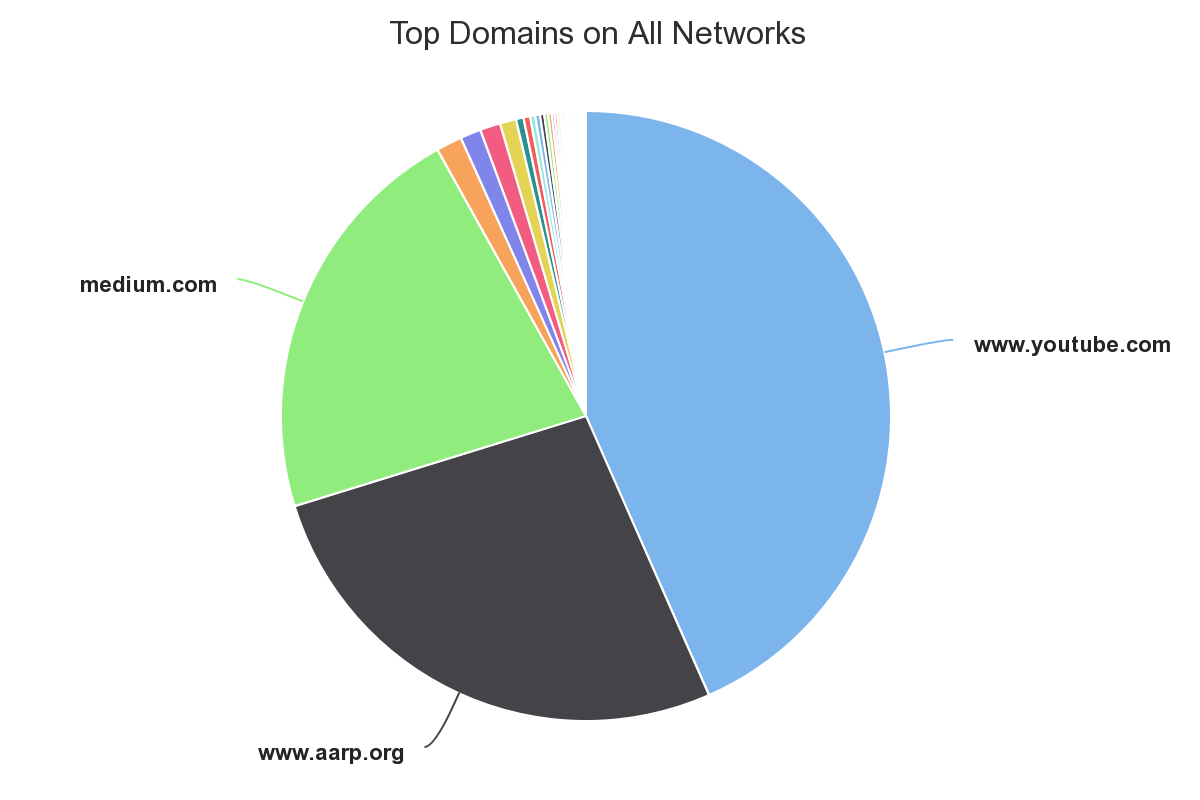
Z = Now, I will predict that my audience may respond well to a fraud prevention “What” post on Medium.com.
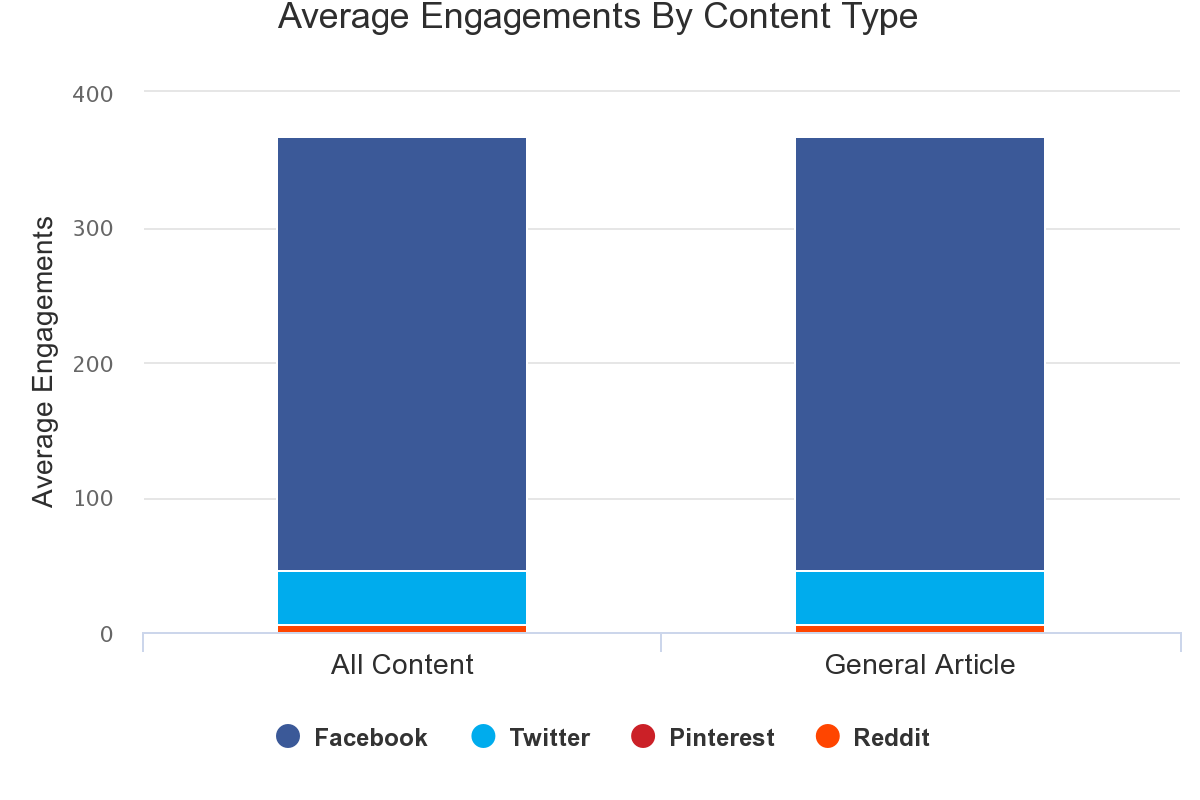
Now It’s Your Turn!
Dust off your SWOT analysis skills and get started using them to transform your content in 2019.
By using these tactics, you’ll soon be creating great content which will keep your audience engaged and coming back for more.
Images courtesy of Susan Moeller